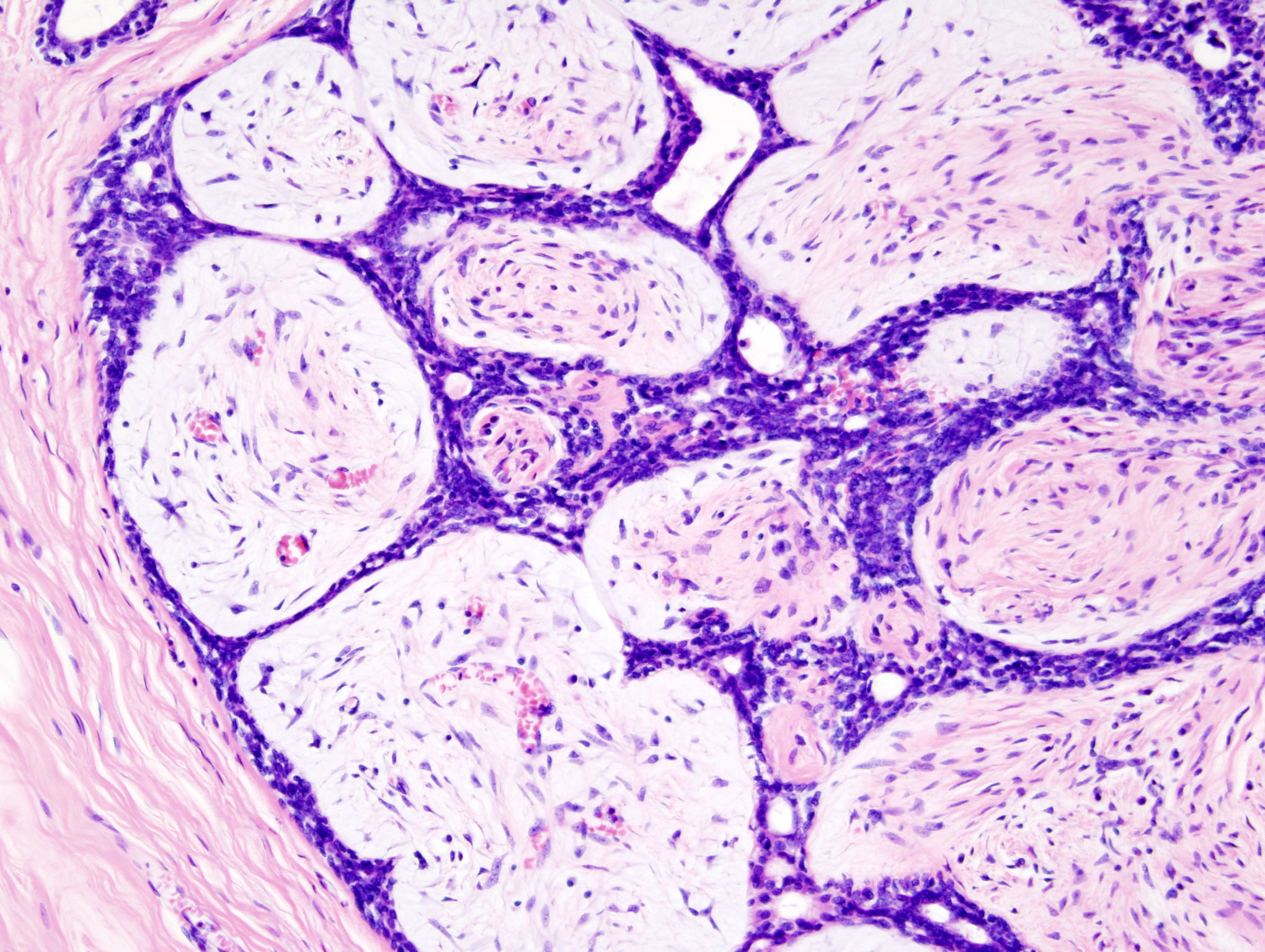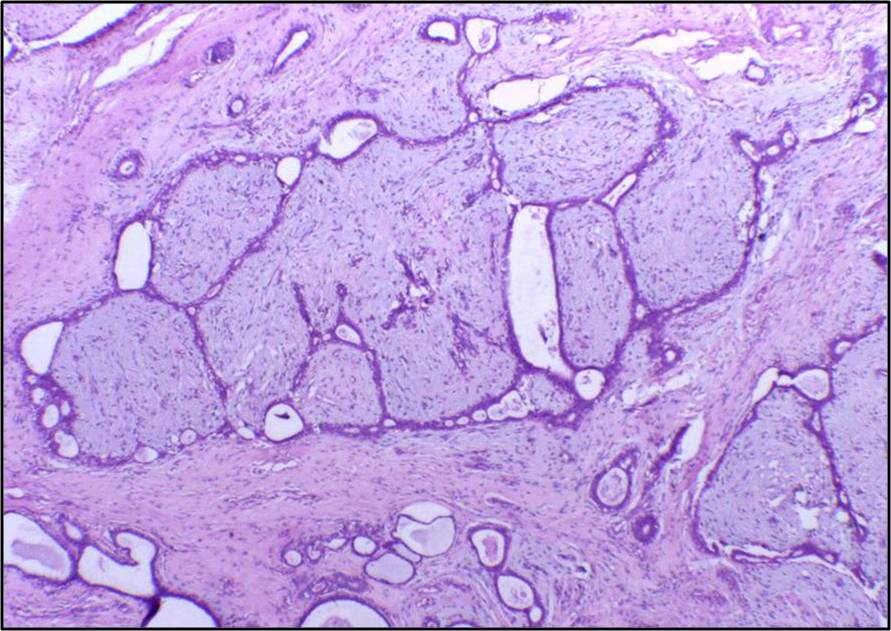Fibroadenoma, often abbreviated as FA, is one of the most common types of benign breast lumps. It is a non-cancerous growth that typically occurs in young women but can affect individuals of all ages. Understanding what fibroadenomas are, how they develop, and their implications for health is essential for anyone who may encounter this condition. This article delves into the nature of fibroadenomas, their symptoms, diagnosis, treatment options, and more.

What Is a Fibroadenoma?
A fibroadenoma is a solid, smooth, and firm lump that develops in the breast tissue. It is composed of both glandular and fibrous tissue, which gives it its name. These lumps are usually round or oval in shape and can move easily under the skin when touched. They are most commonly found in women between the ages of 15 and 35, although they can occur at any age.
Fibroadenomas are classified as benign, meaning they are not cancerous and do not increase the risk of developing breast cancer. However, their presence can sometimes cause concern due to their resemblance to other types of breast lumps. For this reason, proper evaluation by a healthcare professional is crucial.
Types of Fibroadenomas
- Simple Fibroadenomas: These are the most common type and appear uniform in texture and structure when examined under a microscope.
- Complex Fibroadenomas: These contain additional features such as cysts or calcifications, which may slightly increase the risk of breast cancer compared to simple fibroadenomas.
- Giant Fibroadenomas: These are larger than typical fibroadenomas and can grow to several centimeters in size, potentially causing discomfort or distortion of the breast shape.
- Juvenile Fibroadenomas: These occur in adolescents and tend to grow rapidly due to hormonal changes during puberty.
Symptoms of Fibroadenomas
Fibroadenomas often present with distinct characteristics that set them apart from other breast lumps. Some of the most common symptoms include:
- A painless, rubbery lump that feels firm and smooth to the touch.
- The lump is mobile, meaning it can be moved around under the skin without much resistance.
- In some cases, the lump may change in size during the menstrual cycle due to hormonal fluctuations.
- Rarely, fibroadenomas may cause mild discomfort or tenderness, especially if they press against surrounding tissues.
It is important to note that fibroadenomas do not typically cause redness, warmth, or skin changes over the lump. If these symptoms are present, it may indicate another condition that requires prompt medical attention.
Causes of Fibroadenomas
The exact cause of fibroadenomas is not fully understood, but researchers believe that hormonal imbalances play a significant role in their development. The following factors are thought to contribute to the formation of fibroadenomas:
- Hormonal Changes: Fluctuations in estrogen and progesterone levels, particularly during puberty, pregnancy, or menopause, can stimulate the growth of fibrous and glandular tissue in the breasts.
- Genetic Predisposition: Some studies suggest that a family history of fibroadenomas or other benign breast conditions may increase the likelihood of developing them.
- Age and Gender: Fibroadenomas are more common in younger women, likely due to higher levels of reproductive hormones during this stage of life.
While these factors may increase the risk of developing fibroadenomas, many individuals with no known risk factors also experience them. This highlights the importance of regular breast self-examinations and screenings to detect any unusual changes early.
Diagnosis of Fibroadenomas
When a lump is discovered in the breast, it is essential to determine whether it is benign or requires further investigation. The diagnostic process for fibroadenomas typically involves the following steps:
Clinical Breast Examination
A healthcare provider will perform a physical examination of the breast to assess the size, shape, texture, and mobility of the lump. During this examination, the provider may ask about the duration of the lump, any associated symptoms, and the patient’s medical history.
Imaging Tests
If the lump appears suspicious or cannot be definitively identified through a physical exam, imaging tests may be ordered. These tests help provide a clearer picture of the lump’s characteristics and rule out other conditions.
- Mammogram: An X-ray of the breast tissue used to identify abnormalities. While mammograms are less effective in younger women due to denser breast tissue, they can still provide valuable information.
- Ultrasound: This imaging technique uses sound waves to create detailed images of the breast tissue. Ultrasounds are particularly useful for distinguishing between solid masses (like fibroadenomas) and fluid-filled cysts.
Breast Biopsy
In some cases, a biopsy may be necessary to confirm the diagnosis. During a biopsy, a small sample of tissue is removed from the lump and examined under a microscope. There are several types of biopsies, including:
- Fine-Needle Aspiration: A thin needle is used to extract cells from the lump.
- Core Needle Biopsy: A larger needle is used to remove a small cylinder of tissue from the lump.
- Surgical Biopsy: In rare cases, the entire lump may need to be surgically removed for analysis.
Biopsy results can confirm whether the lump is a fibroadenoma or another type of growth, providing clarity and peace of mind for the patient.
Treatment Options for Fibroadenomas
The treatment approach for fibroadenomas depends on several factors, including the size of the lump, whether it causes discomfort, and the patient’s personal preferences. In many cases, no treatment is required, as fibroadenomas are benign and do not pose a health risk. However, the following options are available for those who wish to address the condition:
Observation and Monitoring
For small, asymptomatic fibroadenomas, healthcare providers often recommend a “watchful waiting” approach. This involves regular follow-up appointments and imaging tests to monitor the lump for any changes in size or appearance. Many fibroadenomas remain stable or even shrink over time, particularly after menopause when hormone levels decrease.
Medication
In certain cases, medications may be prescribed to manage symptoms or reduce the size of the lump. Hormonal therapies, such as oral contraceptives or tamoxifen, can sometimes help regulate hormone levels and minimize the growth of fibroadenomas. However, these treatments are not always effective and may have side effects.
Surgical Removal
Surgery is typically reserved for fibroadenomas that are large, growing rapidly, or causing significant discomfort. The two main surgical procedures used to remove fibroadenomas are:
- Lumpectomy: The lump is surgically excised while preserving the surrounding breast tissue.
- Cryotherapy: A minimally invasive procedure that uses cold temperatures to destroy the lump.
Surgical removal is generally safe and effective, but it may leave a small scar and require a period of recovery.
Living with Fibroadenomas
For many individuals, living with fibroadenomas involves learning to coexist with the condition and understanding its implications. Here are some tips for managing fibroadenomas and maintaining breast health:
- Perform Regular Self-Exams: Familiarize yourself with the normal look and feel of your breasts so you can quickly identify any new or unusual changes.
- Attend Routine Screenings: Follow your healthcare provider’s recommendations for mammograms and other imaging tests based on your age and risk factors.
- Maintain a Healthy Lifestyle: Eating a balanced diet, exercising regularly, and avoiding tobacco and excessive alcohol consumption can support overall breast health.
- Seek Emotional Support: If you feel anxious or overwhelmed about your diagnosis, consider talking to a counselor or joining a support group for individuals with similar experiences.
When to See a Doctor
While fibroadenomas are generally harmless, it is important to consult a healthcare provider if you notice any of the following:
- A new lump or thickening in the breast or underarm area.
- Changes in the size, shape, or appearance of an existing lump.
- Persistent pain or discomfort in the breast.
- Redness, warmth, or dimpling of the breast skin.
These symptoms could indicate a different condition that requires prompt evaluation and treatment.





